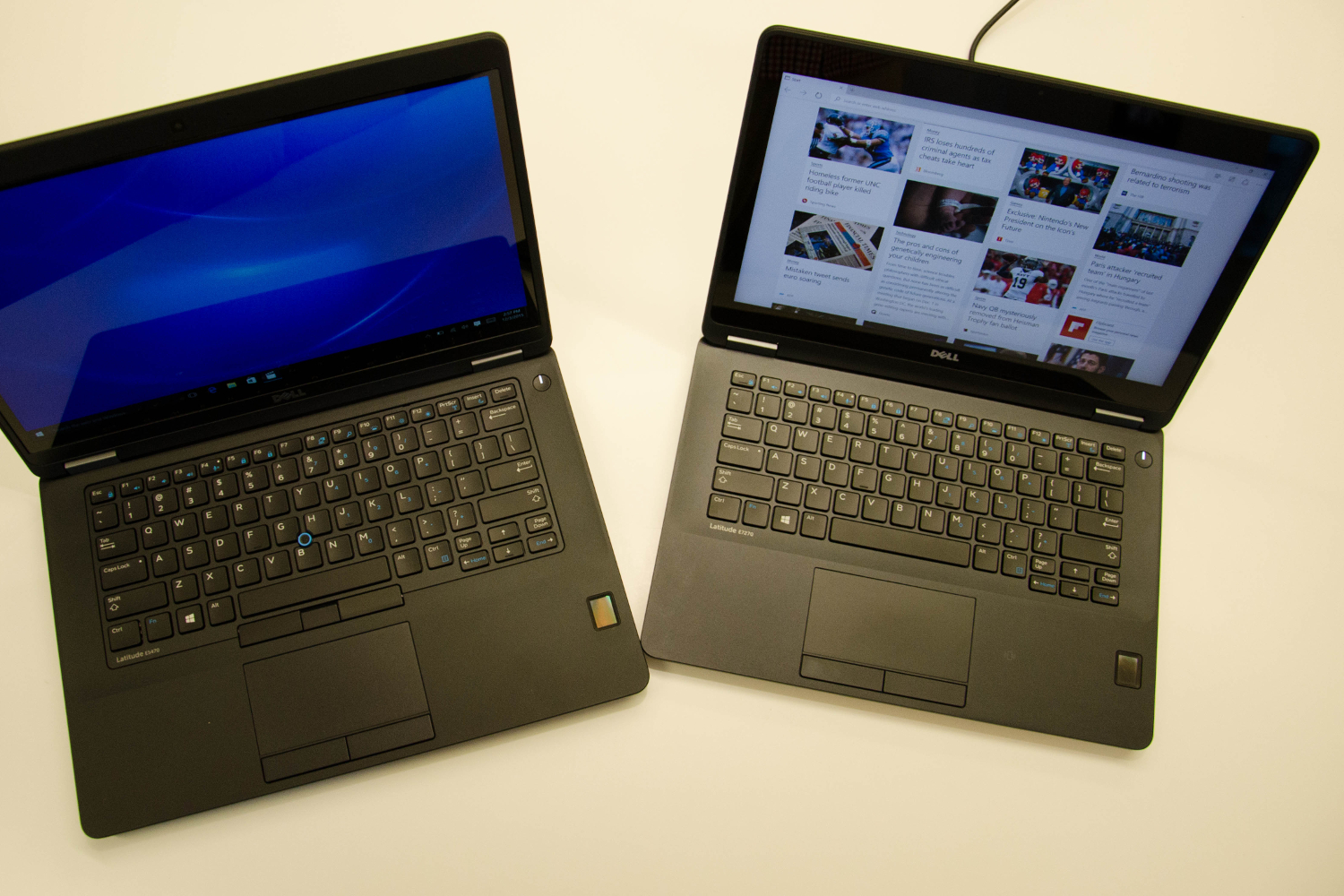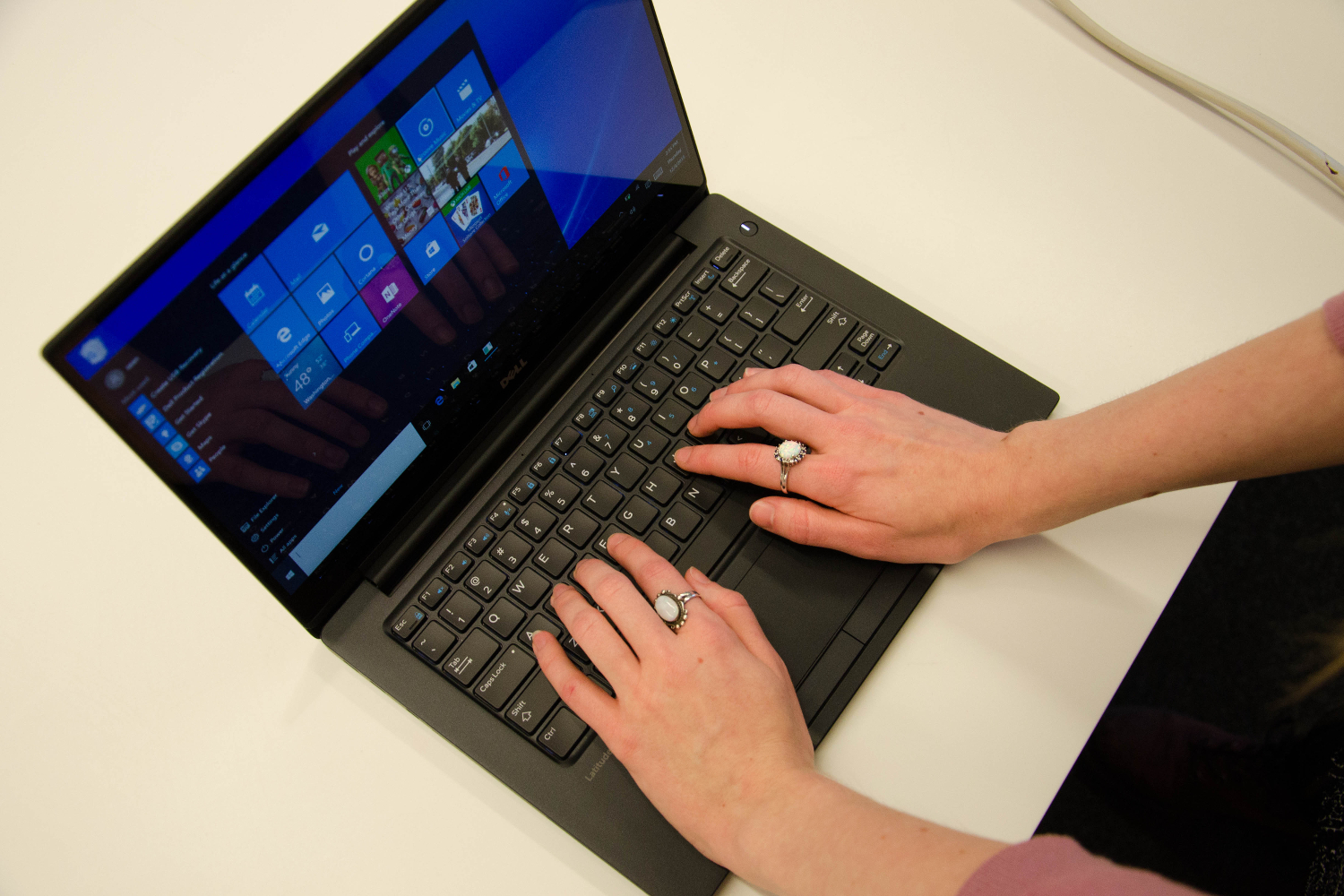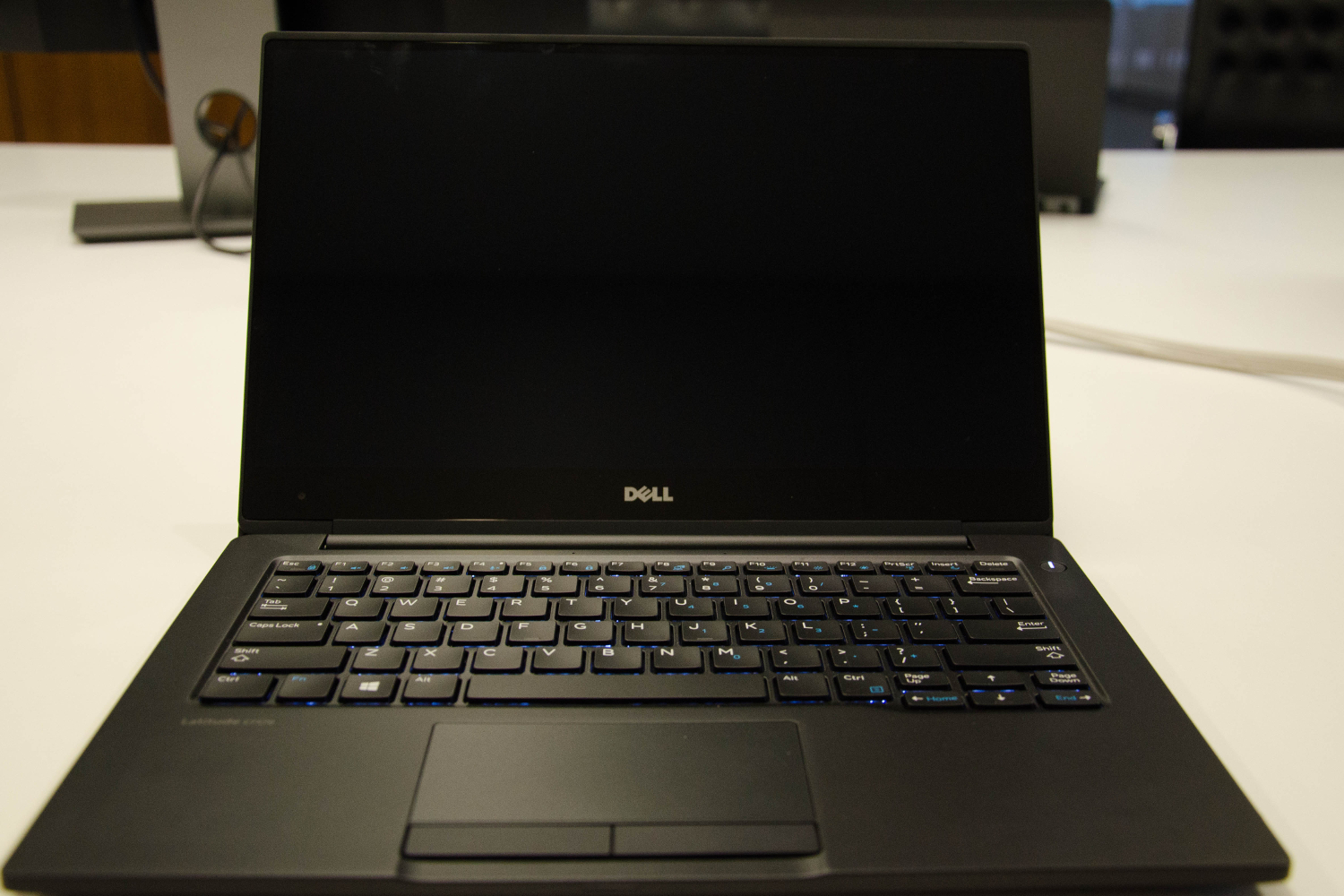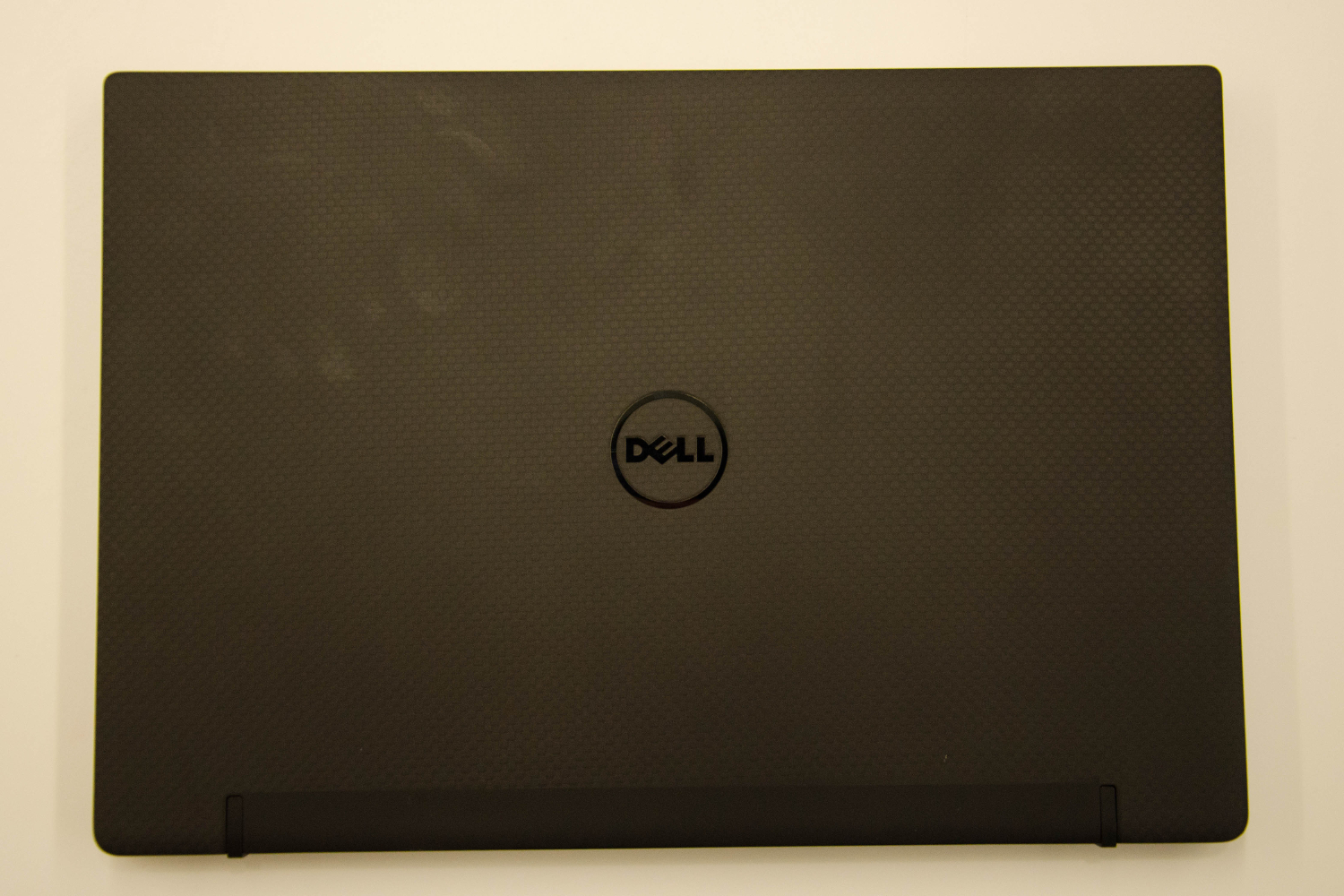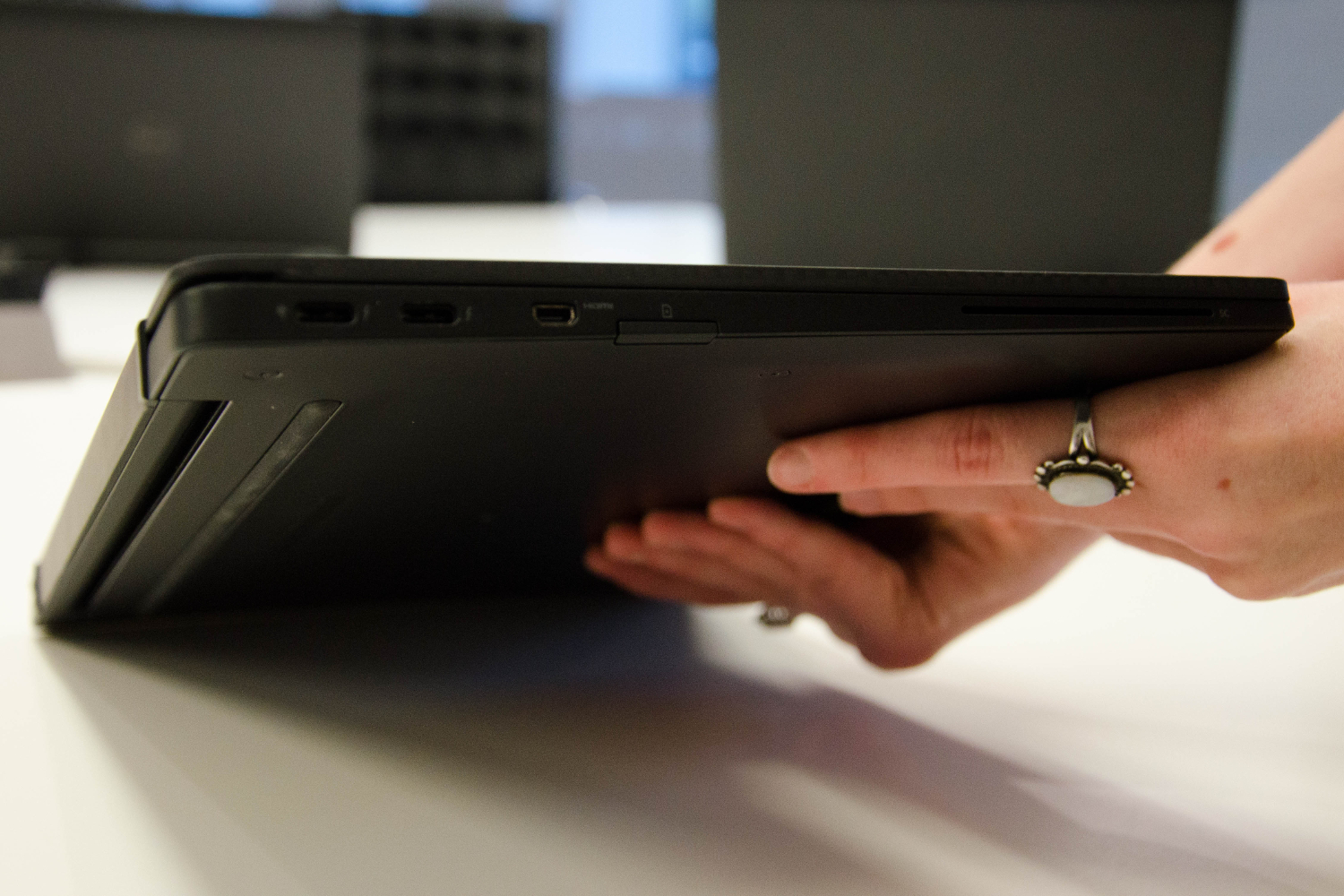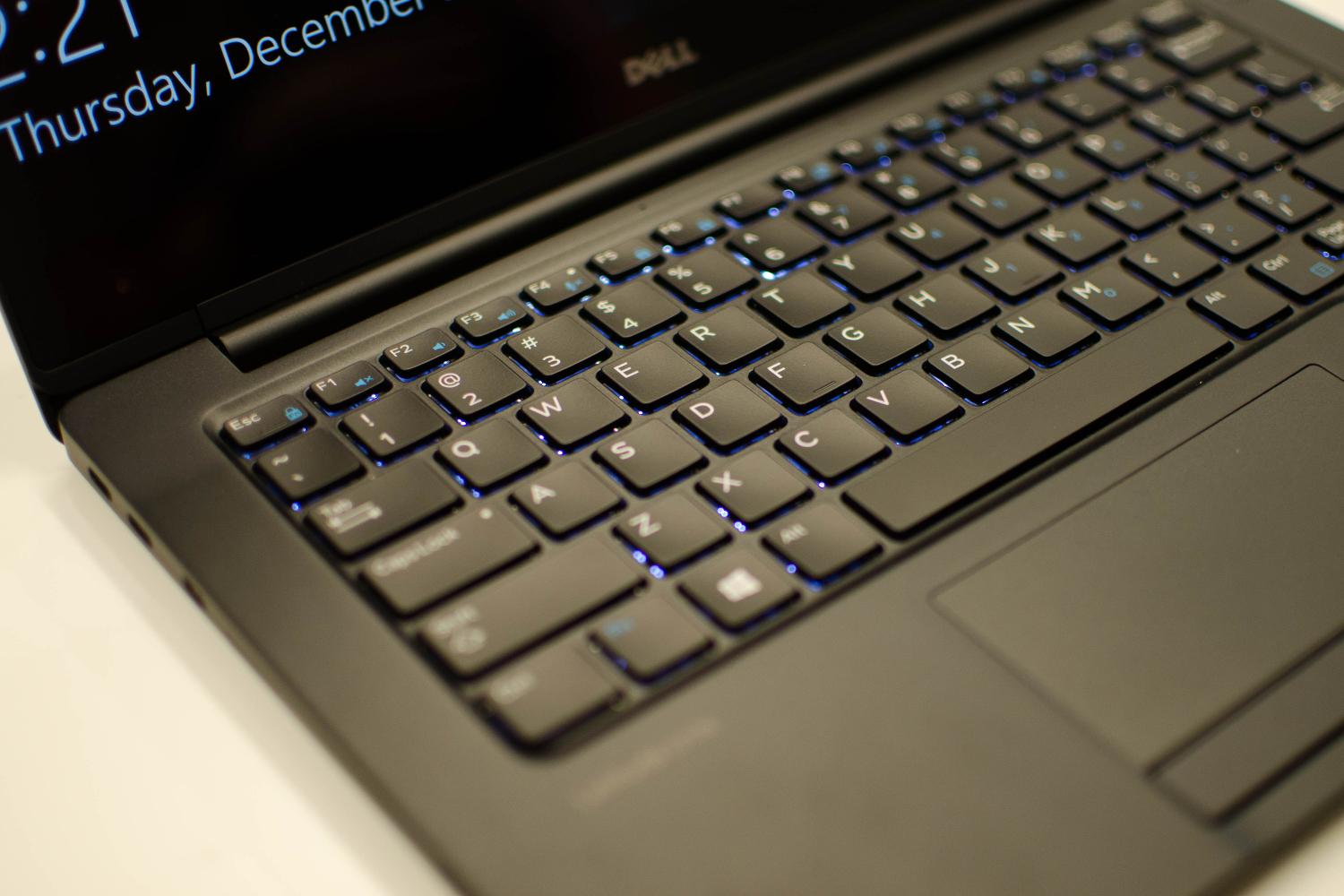That doesn’t mean the new Latitude is a mere copy of the XPS 13, however. While the dimensions are similar, the enterprise version ditches the standard 6th-generation Intel Core for an Intel Core M processor. Doing so sacrifices performance, which may seem a strange decision given the target market. But Core M makes it possible to ditch the cooling fan, and also shaves a bit off both size and weight.
It’s the second point that I found most obvious when I picked up the new Latitude. The XPS 13 is light, but due to its small footprint, is rather dense – and thus feels heavy. The Latitude is a different story. It feels like the featherweight its dimensions suggest it should be.
There’s actually two versions of the Latitude 7000 13. One has a metal display, while the other makes heavy use of carbon fiber, and they weight about 2.6 and 2.4 pounds, respectively. They’re both about sixth-tenths of an inch thick. It may not seem like the slight weight loss compared to the 2.7 pounds XPS 13 would matter, but it’s easy noticeable, especially with the carbon fiber version.
Speaking of which, the carbon model looks like a million bucks in its own quirky, nothing-but-business fashion. It’d be absurd to call it beautiful, and a stretch to call it elegant. But boy, it looks as ready for the rough-and-tumble lifestyle as any ThinkPad ever built.
The differences between the XPS and Latitude continue with the keyboard. It seems to offer better travel than the XPS 13, and has a tactile feel that’s firmer and more direct. To my fingers it absolutely feels like an improvement. I’m not as sure about the touchpad. The Latitude has tactile, distinct left/right buttons. While they do their job, they reduce the size of the touchpad. I also found the touchpad itself a bit less responsive, but that’s a hard judgement to make without spending several hours with the machine.
Dell made sure I knew of the Latitude’s extensive connectivity. The 13-incher has three USB 3.0, one USB Type-C, HDMI, Mini-DisplayPort, and an SDcard slot. The typical combo of Wi-Fi and Bluetooth is improved, too, with optional mobile data support.
As I think I’ve made clear, the new Latitude 13 7000 is actually quite distinct from the XPS 13, despite the similarities in appearance. But the displays are identical. Both feature InfinityEdge, and both are available with 1080p or 3,200 x 1,800 resolution, with the latter providing touch support. Unfortunately, this means a glossy coat is the only option – so glare will be a problem. And as with the XPS 13, the Latitude has to place the webcam at the bottom of the display (because there’s no room at the top), resulting in an awkward up-the-nose angle during conference calls.
Given the information here, you may think the Latitude 13 7000 is actually superior to its consumer cousin. While not quite as fast in processor speed, it’s lighter, passively cooled, and has a better keyboard. So why not just buy the Latitude?
The carbon model looks like a million bucks in its own quirky, nothing-but-business fashion.
Price. It starts at $1,299. While it’s not entirely decided what that base model will include, the Latitude’s base MSRP is almost enough to buy the most affordable XPS 13 with 3,200 x 1,800 touchscreen. It seems that, no matter how it’s configured, a significant price premium will be attached.
That’s hardly unique to Dell, but it does bring the Latitude’s value into question. Lenovo’s X1 Carbon starts at the same base price, and includes a standard Core CPU instead of Core M. Meanwhile, the X1 Yoga with OLED will allegedly be priced around $1,650. Even availability isn’t an obvious win for Dell, because the Latitude won’t come around until March 8th. Lenovo’s new X1 Carbon shows up in February, along with the standard X1 Yoga, and the OLED model is due in April. I asked Dell if OLED is coming to the XPS 13 or Latitude 13 7000 – and, well, don’t get your hopes up.
I came away from the Latitude with a positive impression, but unlike the XPS 13, it doesn’t seem destined to run away from the competition. Lenovo puts up a tough fight in the business market, and it remains to be seen if Dell’s latest and greatest will emerge victorious against ThinkPad’s finest.
Pros:
- Durable carbon fiber option
- Excellent keyboard
- Passively cooled
- Featherweight
Cons:
- Core M processor
- Touchpad feels small
- No matte display option
